How to Find Out if My Dentist Is in Network
Fascinated by teeth? Love helping people? Then a career in dentistry might be a good fit for you. In this guide, we go over how to become a dentist in 13 steps, starting in high school and going all the way through dental school. Before that, though, let's look at the job outlook of dentists and the basic requirements you must have to become one. If you're interested in becoming a dentist, it's important that you have a rough idea of what to expect in terms of salary potential and employment growth. Here's the latest data. Dentists have the opportunity to make quite a bit of money. According to the US Bureau of Labor Statistics (BLS), the median salary for all dentists in 2018 was $156,240, or $75.12 per hour. By comparison, the average median salary for all jobs in 2018 was $38,640; this means that dentists make over $100,000 more than the median pay for all jobs in the US. Moreover, this median salary for dentists was markedly higher than the median pay for all health diagnosing and treating practitioners, which was $80,990 in 2018. Now, it's important to know that different types of dentists have very different median salaries. The table below compares the salaries of an array of dentists with distinct specializations: Source: BLS As you can see from the above table, oral surgeons and orthodontists make the most amount of money of any dental professional, with median salaries exceeding $200,000. Nevertheless, all types of dentists make a lot of money, so much so that they're one of the highest-paying jobs, according to the BLS. Even if you're not a specialist in one of these extremely lucrative specializations, you can still bring in a great income! It should also be noted that location, experience, and several other factors can really impact the salary you make as a dentist. As an example, the BLS notes that dentists typically make the most money working at dentist offices, rather than doctor offices or medical hospitals. In terms of what state offers dentists the highest salaries, that award goes to Delaware, which has an annual mean wage for dentists of $264,440. Evidently, the salary potential is quite high for dentists. But how is the employment outlook? According to the BLS, the employment growth rate for dentists is 7% for 2018-2028 , which is 2% faster than the average growth rate for all jobs. In 2018, there were 155,000 dentist positions available in the US, and there is an anticipated increase of 11,600 jobs from 2018 to 2028. Here's what the BLS states about employment for dentists: "Demand for dental services will increase as the population ages. Many members of the aging baby-boom generation will need dental work. Because those in each generation are more likely to keep their teeth than those in past generations, more dental care will be needed in the years to come. In addition, there will be increased demand for complicated dental work, including dental implants and bridges." This table shows the employment growth rates for different types of dentists, arranged from highest growth rate to lowest: Source: BLS As the chart indicates, all types of dentists are expected to experience average or faster-than-average employment growth through 2028. That's great news for aspiring dentists! Let's briefly go over the three basic requirements you'll need in order to become a dentist. How long does it take to become a dentist? All dentists must have completed four years of dental school and received a doctorate in dentistry. There are two types of dental doctoral degrees you can get: The two degrees mean the exact same thing —there's no difference in coursework or skills learned. In other words, a dentist with a DDS is just as qualified as a dentist with a DMD, and vice versa. Which of these two dental doctorates you get will ultimately just depend on which one your dental school offers. Speaking of dental schools, the dental school you pick must be accredited by the Commission on Dental Accreditation (CODA). The American Dental Association (ADA) reports that there are more than 65 accredited dental schools in the US. You can only enroll in dental school after you've earned a bachelor's degree—typically in a related field of study, such as chemistry or biology—and passed the Dental Admission Test (DAT), which we discuss in more detail later. Dental schools are extremely competitive, so you'll need to have one very impressive application if you're hoping to get into top schools. In every state you'll need to get licensure in order to practice dentistry. Although specific licensure requirements vary by state, all states require aspiring dentists to complete three things: You cannot legally practice dentistry if you've completed dental school but have not passed your state's approved written and clinical exams. Your state dental board will have all the information you need about what exams you must take to become a dentist. As mentioned above, the first requirement for licensure is the completion of a four-year dental school program at a CODA-accredited institution. The second requirement is the passing of a written exam, which is the same for all states: Part I and Part II of the National Board Dental Examination (NBDE). The two parts of this exam are both administered by The Joint Commission on National Dental Examinations. Here's how the ADA describes the content of the NBDE: "Each examination is composed exclusively of multiple-choice test items. Part I is a comprehensive examination covering the basic biomedical sciences, dental anatomy and ethics testlets. Part II is a comprehensive examination covering clinical dental subjects, including patient management." Students typically take the written exam during the last two years of dental school, with advice and prep support from their program. The final requirement for licensure is the passing of a clinical examination, which is required by most, but not all, states. The actual test varies by region but is usually a live-patient exam. Once you meet all three of these requirements, you'll be officially licensed to practice dentistry in your state. Though most aspiring dentists go on to become general dentist practitioners, some might want to specialize in a particular field, such as pediatric dentistry or periodontics. In this case, you'll usually need to spend at least a couple of more years in school or in a residency and get state licensure for your chosen specialization (this is in addition to the basic education and licensure requirements detailed above). Again, exact requirements for this vary by state, so be sure to check directly with your state dental board for more information. It might sound strange to start your journey toward dentistry in high school, but doing this can help you get a head start on the whole process and make you even more prepared for what to expect in dental school. The field of dentistry requires high-level knowledge of science and math, so try to take (and of course, do well in!) as many math and science classes as you can throughout high school. The math and science classes you're able to take will naturally depend on what is offered at your high school, but here are some examples of courses that would work well for students hoping to eventually establish a career in dentistry: If possible, try to take the honors and/or AP versions of these classes so you can learn even more about the topics and will be better prepared for the high-level classes you'll need to take in college and dental school. Below are all the AP science and math classes and exams available to high school students (what your school offers might be different!): You want to choose math/science classes you can not only do well in, but that you also have an actual interest in. If you're not into astronomy, for example, it's OK if you don't take your school's astronomy class—just find another science/math class that interests you more and that you're confident you can get a good grade in. Additionally, know that you certainly don't need to take all AP and/or honors versions of the science and math classes you choose. You should take a solid number of these courses, sure—but you should only take the advanced versions if you're pretty confident you can perform well in them; otherwise, you might struggle to keep up your GPA. As a high school student, you likely go to the dentist or orthodontist fairly often and are therefore familiar with at least one dental professional in your area. A local dentist can be an excellent resource for teaching you more about dentistry and what kind of career you're envisioning for yourself. See whether you can email or call your local dentist to ask questions you have about the profession and their own personal career path. For example, maybe you're curious about what led this person to pursue dentistry and want to know what they felt was the hardest part of becoming a dentist. Job shadowing can be useful if you don't know a lot about the field you're interested in. To shadow someone is to spend a day observing them performing their everyday work duties. Job shadowing a dentist means you'd get to watch them consult patients, perform oral exams, drill teeth with cavities, etc. The best time to shadow a dentist is during the summer when you're not in school and can freely go to your local dental office on a weekday. For more information about job shadowing in high school, check out our in-depth guide. You don't need to go to any particular college to be a great dentist or an impressive dental school candidate, but you should still make an effort to put forward a stellar college application so you can get into a good school. Here are the most important qualities that make for a superb college application: Give yourself plenty of time to work on your applications and to write your essay(s) while also keeping an eye on your college application deadlines. Once you've graduated from high school, it's time to start seriously thinking about what steps you can take as a college student to help you forge a steady path to becoming a dentist. It doesn't matter where you go to college if you're planning on becoming a dentist, just as long as you take (and excel in) as many science- and health-oriented classes as you can. These may include classes such as organic chemistry, anatomy, and biology. While you don't need any particular major for dental school, it's a good idea to choose a science major, such as chemistry, biology, or physics. This way you'll get done a lot of the prerequisites you'll need in order to excel in dental school. General prerequisites for dental school are as follows: If you're struggling to figure out which classes to take or what you should major in to prepare you for dental school, you can consult your school's Prehealth Professions Advisor whom you can find through the National Association of Advisors to the Health Professions. Of course, make sure you're performing well in your science, math, and pre-health courses. Your grades in these will be most important to dental schools, which are notoriously competitive. So definitely do your best and try not to overwhelm yourself! The American Student Dental Association (ASDA) is a group that gives out free advice and publications for dental school students and college and high school students who are interested in becoming dentists. By joining the ASDA, you'll get access to a community of aspiring dentists and mentors, as well as scholarships, health and wellness resources, and tips for the National Board Dental Examination. The cost to join is $71 for high school and college students, and $88 for dental school students. If possible, try to get a part-time job or volunteer position at a nearby health care facility—ideally, a dental office. This kind of experience will be especially helpful if you didn't ever get the chance to shadow a dentist back in high school. Take your job as an opportunity to learn more about the field of health care as a whole and to talk with real health care professionals and dentists. The DAT, or Dental Admission Test, is an entrance examination unique to dental school applicants (similar to how the LSAT is specifically for law school applicants). The DAT is available year-round, but assuming you want to go into dental school right after college, you'll want to begin preparing for the DAT during your junior year of college and take it at the end of your junior year (or, latest, beginning of your senior year). The American Dental Education Association recommends taking the test in the spring semester of your junior year. The DAT is a multiple-choice test with four main sections: It's scored on a scale of 1-30, with 19 being about average. You can apply to take the DAT and even buy official practice materials, all at the DAT website. The summer before your senior year of college is when you should start getting ready to apply to dental school. Here's a list of all dental schools in the US. Most college students apply to five to 15 dental schools, with a mix of reach schools, match schools, and safety/backup schools. Where you apply will depend on your own interests and preferences, but some of the best dental schools in the US include the following: As mentioned previously, admission to dental school is very competitive, so make sure you're putting together your absolute strongest application. Here are the main factors you'll be evaluated on: Most dental schools require an interview as part of the application process. Here's what the ADA says about them: "Most dental schools require personal interviews with candidates to assess qualities such as desire to help people, self-confidence, ability to meet challenges, ability to get along with people and capacity to work independently. The personal interview also provides an opportunity to ask about the school." If you need help with the dental school application process, refer to the ASDA Handbook, which is available for free to ASDA members. Once you've committed to a dental school, you're on your way to becoming a full-fledged dentist! Dental school lasts four years and results in either a DDS or DMD (both mean the same thing and do not differ in terms of coursework or skills gained). The first two years of dental school are primarily classroom and lab instruction, with an emphasis on basic health sciences. In the last two years, you'll work with real patients under the supervision of licensed faculty. To see what a day in the life of a dental student looks like, go to the ASDA website. As you work your way through dental school, take advantage of any engagement opportunities your school offers dental students. These could include volunteer positions at dental and health clinics, student clubs for dental or other health care students, and so on. Engaging with others in your field can provide you with more on-the-job experience and give you a better sense of what kind of environment you'd like to work in and whether there's a specialization you want to learn more about. Although most dental students go on to work as general dentists, some might want to specialize in a certain subset of dentistry. There are currently 10 specializations recognized by the ADA: If you decide to specialize in one of these fields, you'll likely need to continue your education in dentistry for two or more years. You'll also most likely need to get a specialty license in addition to your general dentistry license. Exact requirements vary depending on the state, so be sure to check with your state dental board. Besides completing dental school, you'll need to get licensed in order to work as a dentist. The first part of licensure is the written exam, which is the same for all states: the National Board Dental Examination (NBDE). You must pass both Part I and Part II of the NBDE to be able to do the clinical exam (see Step 13). Most students take the NBDE in the final two years of dental school with help and resources from their programs. The ADA has all the information you need for registering and studying for both parts of the NBDE. You can also consult your dental school to learn more about what to expect on the exam. The second part of dental licensure is the clinical, or live-patient, examination, which generally takes place after you finish dental school and have passed both Part I and Part II of the NBDE (see Step 12). The requirements for this exam can vary significantly by state (in fact, a few states don't even require a clinical exam!), so you'll want to contact your state dental board if you have questions or concerns. Here's a list of all states and their individual licensure requirements. It's worth noting that most candidates who don't get licensure on a first attempt fail in some area on the clinical exam. Fortunately, you can always retake the test! If you have any further questions about licensure for dentists, check out this ADA pamphlet. Once you've passed your clinical exam, you'll be certified to practice dentistry in your state! How long does it take to become a dentist? Becoming a dentist requires many years of dedication, focus, and hard work—but by planning ahead, you can make your own path to dentistry a lot smoother. Dentistry is a great profession to choose these days: it offers a high salary as well as a high employment growth rate over the next several years. There are three basic requirements for becoming a dentist: While you don't need to start preparing for a career as a dentist as early as high school, doing so can help you better plan out your academic and professional path. To sum up, here again are the 13 steps you need to take to become a dentist: Maybe you're not interested in becoming a dentist but still want to work in dentistry. If this sounds like you, you'll definitely want to check out our guide on how to become a dental assistant! What does it take to become a professor? Our step-by-step guide walks you through the whole process so you can get started right away on pursuing your dream career. Or perhaps you're considering becoming a doctor or lawyer. We've got all the information you need to know to embark on the career path you choose!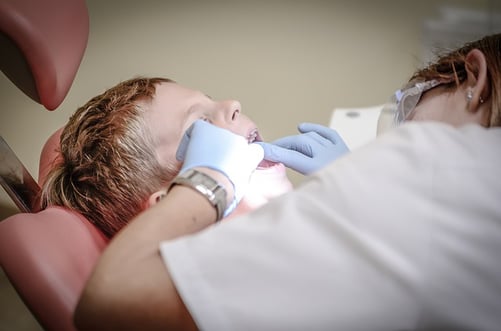
What does the process of becoming a dentist entail? How long does it take to become a dentist?Becoming a Dentist: Salary and Job Outlook
Salary Potential for Dentists
Type of Dentist Median Salary (2018) Oral and maxillofacial surgeons $208,000+ Orthodontists $208,000+ Prosthodontists $176,540 Dentists, general $151,850 Dentists, all other specialists $146,970 Job Outlook for Dentists
Type of Dentist Employment Growth Rate (2018-2028) Dentists, general 8% Oral and maxillofacial surgeons 7% Orthodontists 7% Prosthodontists 7% Dentists, all other specialists 5% 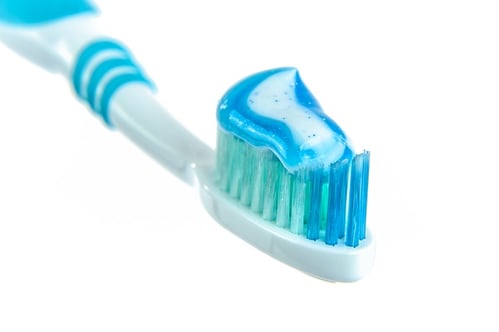 Strangely, brushing your teeth twice a day isn't technically a requirement for becoming a dentist.
Strangely, brushing your teeth twice a day isn't technically a requirement for becoming a dentist. 3 Basic Requirements for Becoming a Dentist
#1: Doctorate in Dentistry
#2: Licensure
#3: Residency/Continued Education and Specialty State Licensure
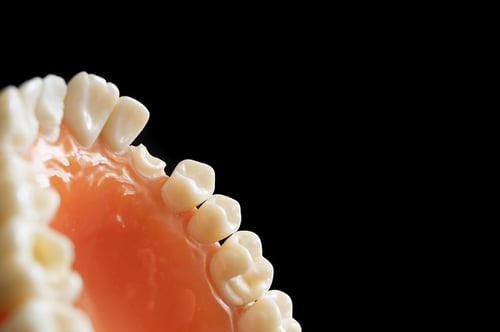
How to Become a Dentist: Complete 13-Step Guide
Now then, let's go over each step you'll need to take in order to become a dentist, from high school to dental school and beyond. We've divided this step-by-step guide into three main sections:
How to Become a Dentist Part 1: High School
Step 1: Take Lots of Math and Science Classes (and Do Well in Them!)
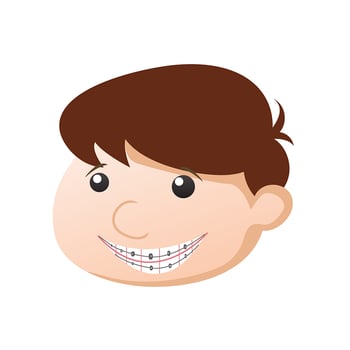 Got braces? Then you probably know an orthodontist or dentist you can talk with.
Got braces? Then you probably know an orthodontist or dentist you can talk with. Step 2: Reach Out to Local Dentists to Ask Questions
Step 3: Job Shadow a Real Dentist
Step 4: Submit Great College Applications
 What not to do when you're stressed in college and planning to work with teeth.
What not to do when you're stressed in college and planning to work with teeth. How to Become a Dentist Part 2: College
Step 5: Continue Taking Science and Pre-Health/Predental Classes
Step 6: Join the American Student Dental Association
Step 7: Gain Some Real-Life Health Care Experience
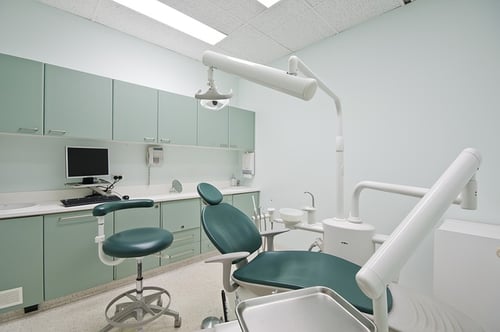 Consider working part-time or volunteering at a local dental office.
Consider working part-time or volunteering at a local dental office. Step 8: Take (and Do Well on!) the DAT
Step 9: Apply to Dental School
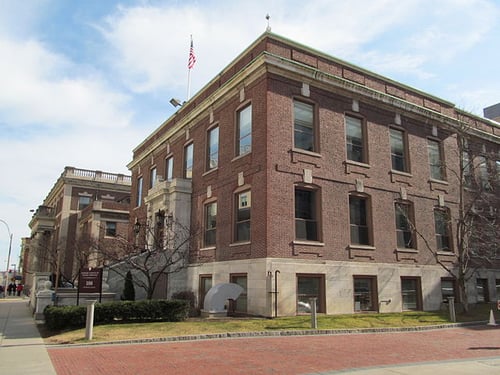 Harvard School of Dental Medicine (John Phelan/Wikimedia Commons)
Harvard School of Dental Medicine (John Phelan/Wikimedia Commons) How to Become a Dentist Part 3: Dental School
Step 10: Get Involved in Your Community
Step 11: Decide Whether You Want to Specialize
Step 12: Take the National Board Dental Examination
Step 13: Take the Clinical Examination
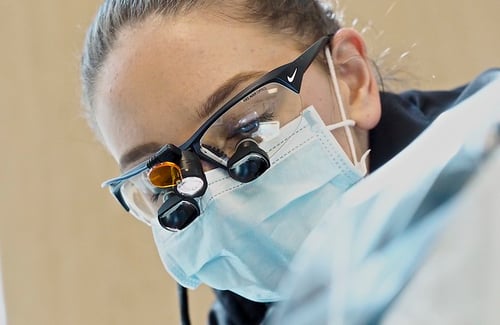 Germanna CC/Flickr
Germanna CC/Flickr Recap: How to Become a Dentist in 13 Easy Steps
In College
In Dental School
What's Next?

About the Author
Hannah received her MA in Japanese Studies from the University of Michigan and holds a bachelor's degree from the University of Southern California. From 2013 to 2015, she taught English in Japan via the JET Program. She is passionate about education, writing, and travel.
How to Find Out if My Dentist Is in Network
Source: https://blog.prepscholar.com/how-to-become-a-dentist